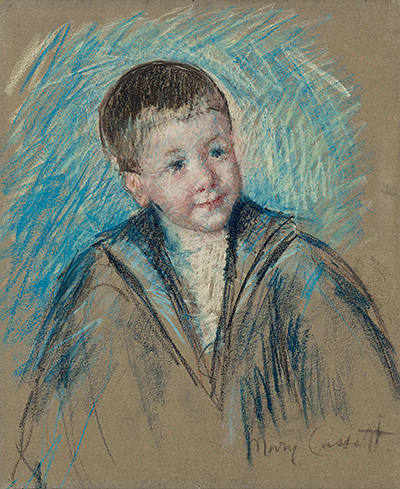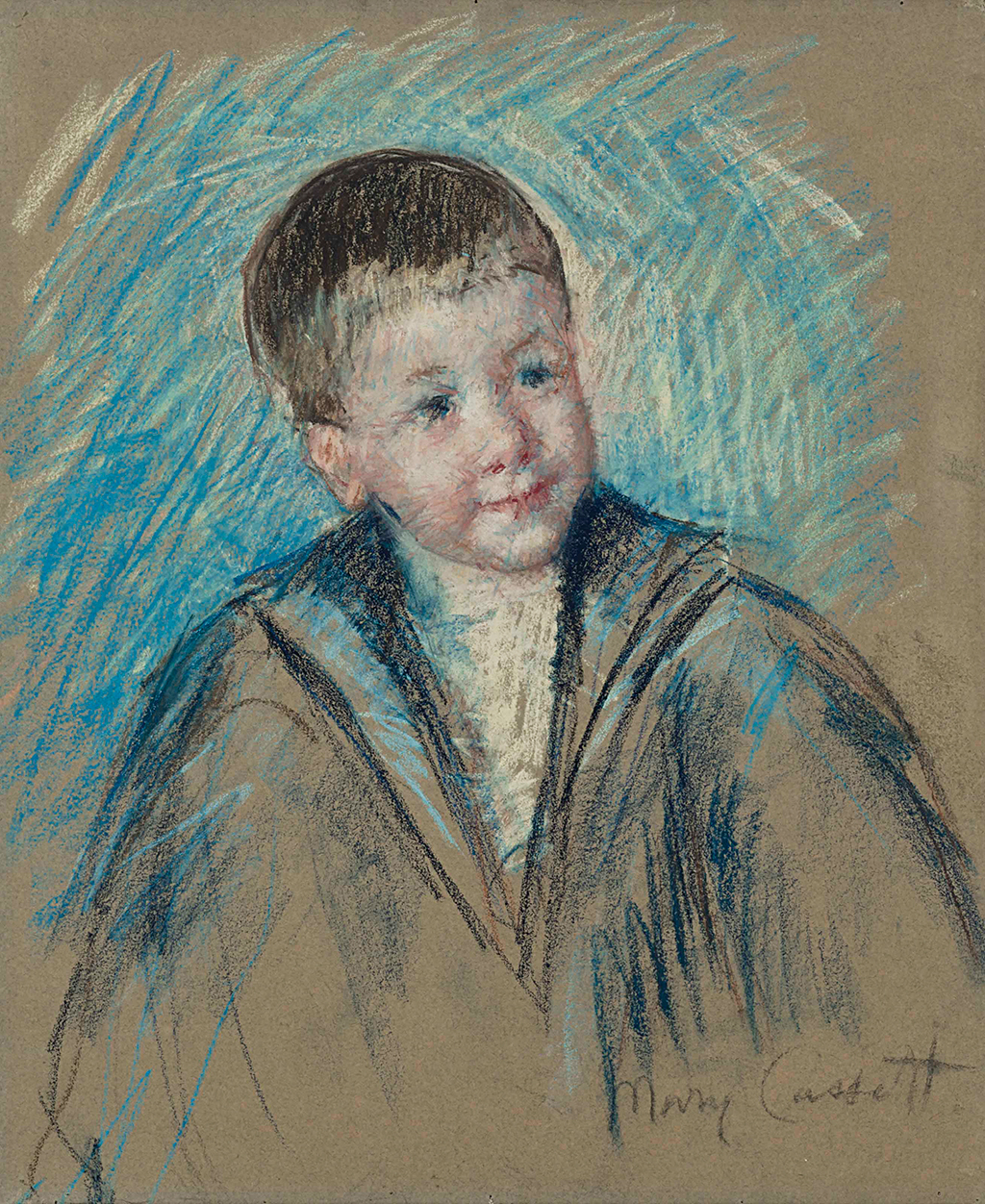This sketch achieved a sale price of $225,000 in 2017, making it one of the most expensive Mary Cassatt drawings in history. A rise in interest in her career in recent years has led to a number of high profile purchases such as this one.
Sketch of Master St Pierre was completed in 1906 using pastels on a laid down canvas, measuring around half a metre in height and width. Cassatt liked to produce pastel drawings which were larger than most other artists would do, and this helped her drawings to create more of an impact. She invariably would focus on key parts of each composition and leave much of the rest relatively unfinished, as was her way. We see the same here with the bottom half of the boy reduced down to just some simple abstract lines that indicate where the rest of his body would continue. His face and neckline, however, are steeped in complex touches of pastel, with several different tones fused together in that concentrated area of work. It is this part of the drawing which must have lifted the valuation of this piece to $100,000 - $150,000 as recently as 2017. It was part of a Christie's sale titled American Art Online, which lasted a week long period in November of that year.
If we look directly at this piece we find Master St Pierre looking across just to our right hand side. He looks happy, perhaps excited by the prospect of being drawn by a well known and respected artist. His clothing is somewhat formal, with a white shirt or garment underneath a much thicker, rigid looking blue coat or jacket. The artist signs the piece in the bottom right hand corner and we believe that she produced this drawing in 1906. Cassatt uses very bold, clear lines for the outlines of his clothing and then fills inside parts with a slightly softer use of pastel. She more suggests at his clothing, rather than depicting it in any great detail, just as she handles the background behind. She swipes some fast and aggressive lines to put together a very rough plain of colour that provides the backdrop, produced from a combination of blue and white strokes in different directions, also gifting the piece a burst of brightness.
Mary Cassatt would establish herself was one of the most famous women painters in all art history and played an important role within the influential Impressionist movement alongside another notable female artist, Berthe Morisot. The latter would make use of similarly female-focused content and was also exceptionally skilled, technically, and so welcomed into the movement with open arms. Some of her own highlights included The Cradle, Woman at her Toilette and Julie Daydreaming. Morisot was French which probably helped her to gain favour in the earlier part of her career, and she was also strongly connected to artist Edouard Manet, having married his brother Eugene. Marie Bracquemond was another French Impressionist artist who helped create this three-way influence from female artists which remains highly celebrated today.





